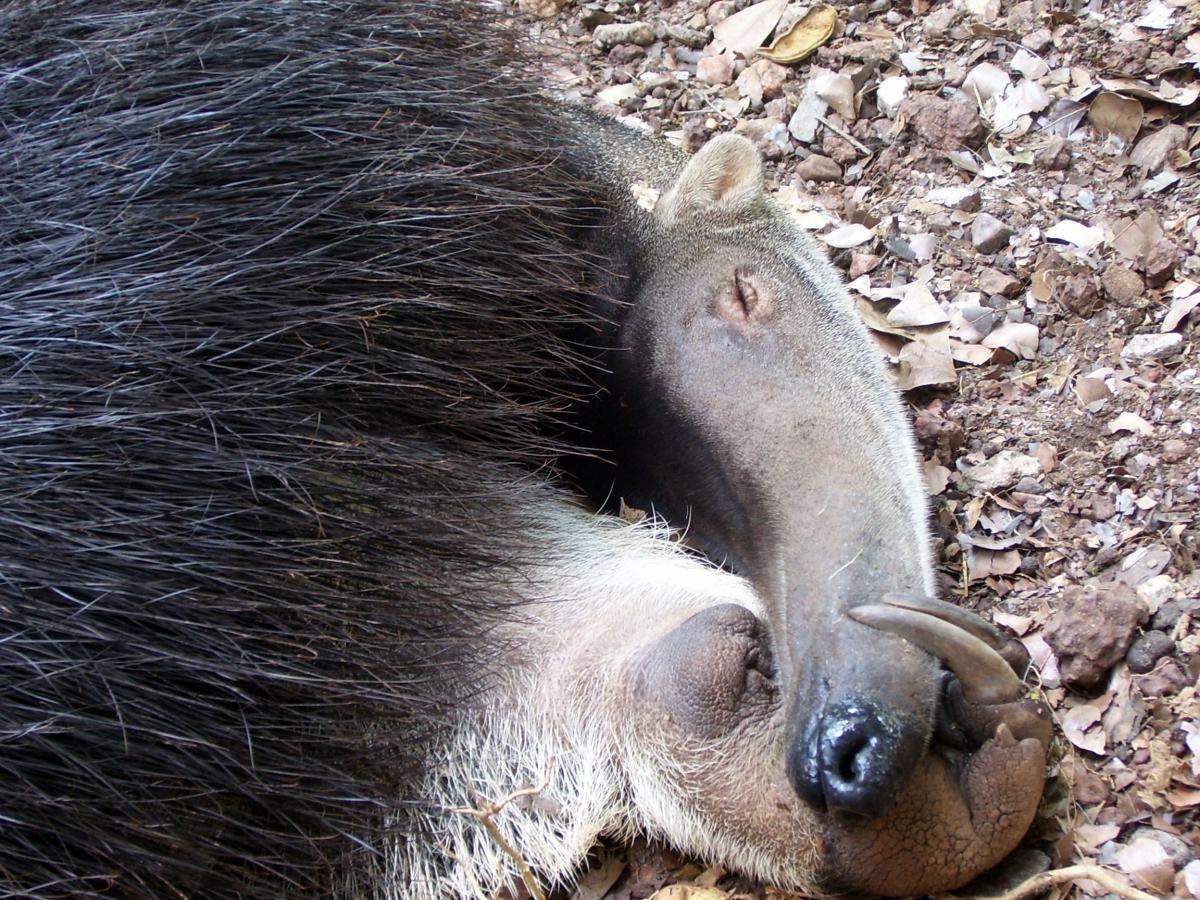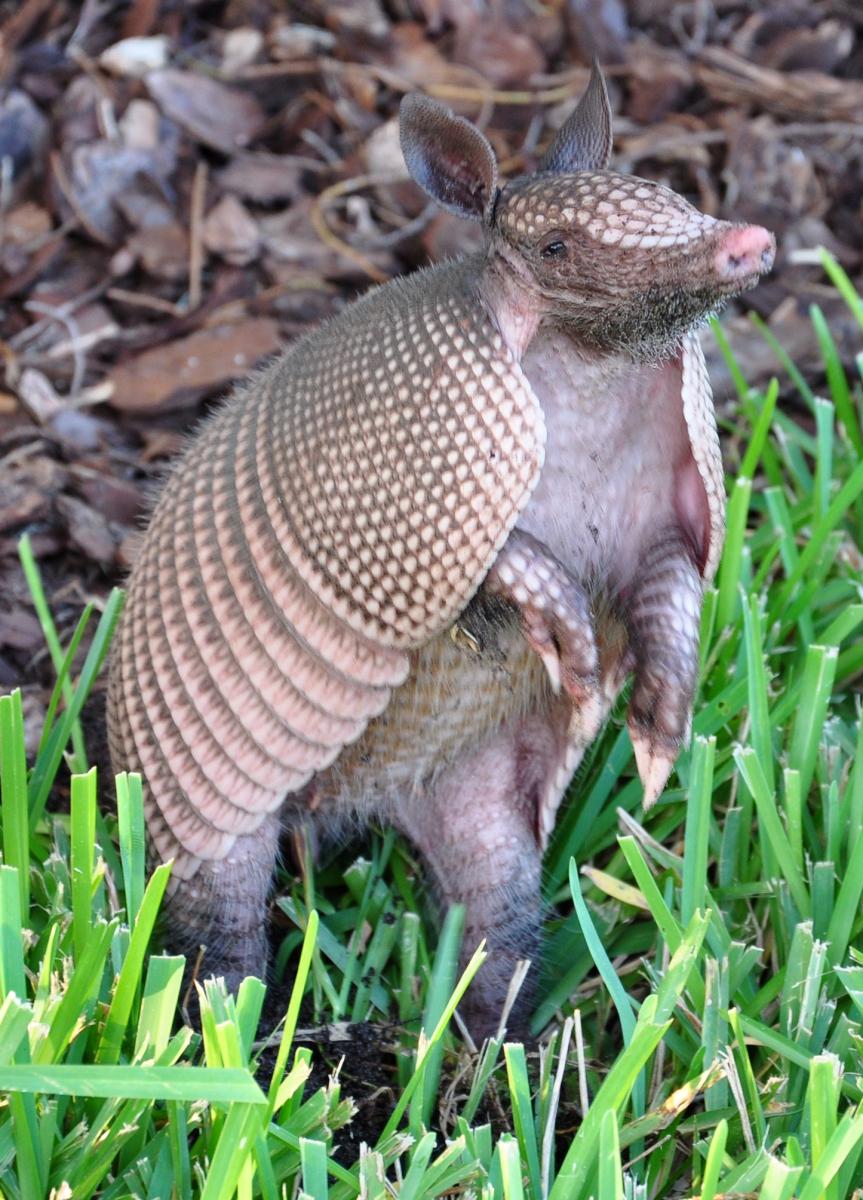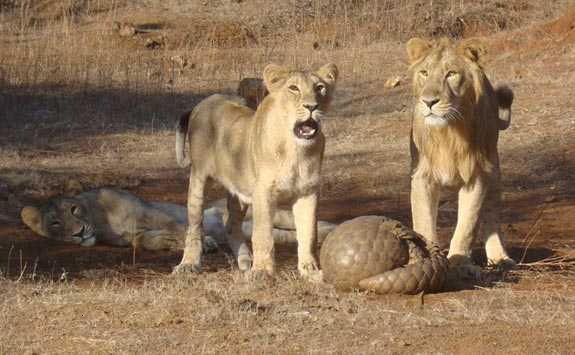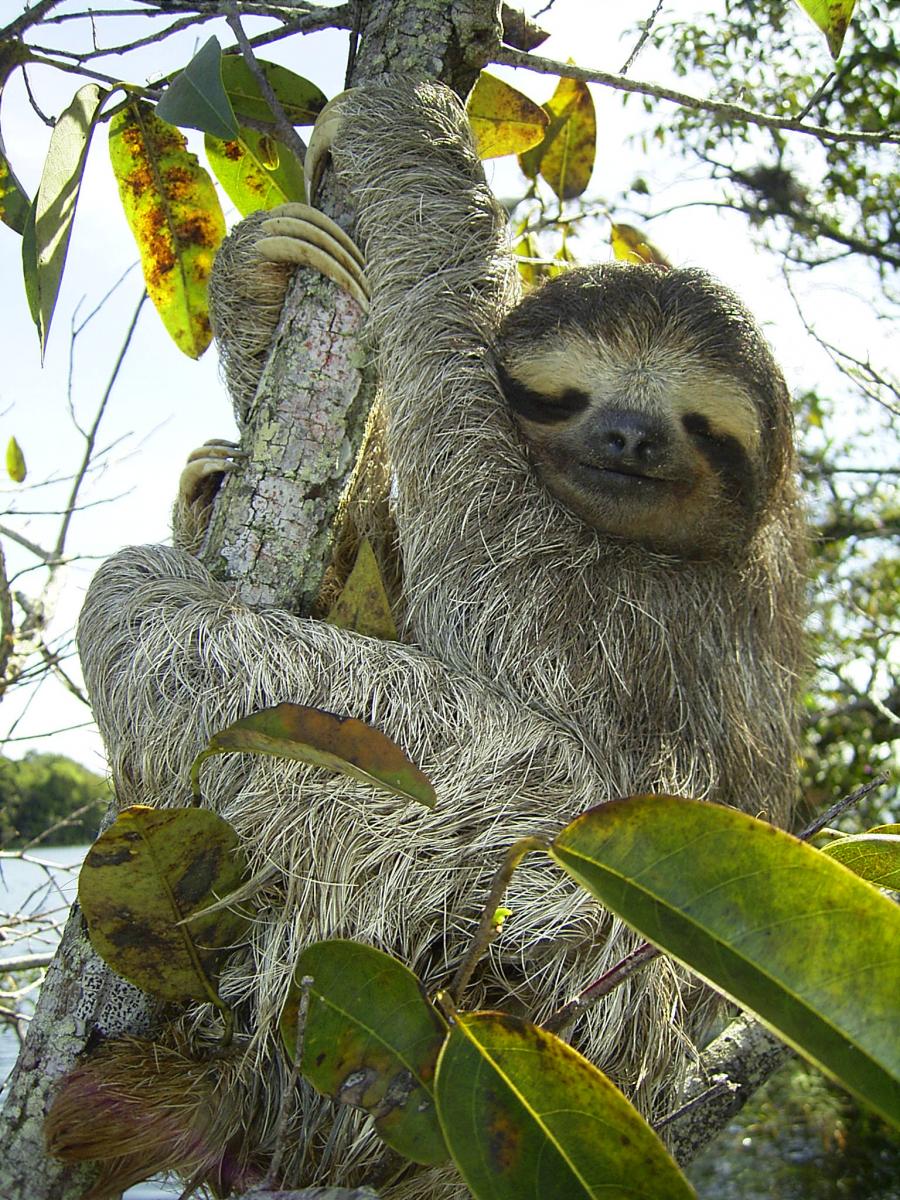In part 1, I started to pay a debt to Steve Bowden by writing about sloths. It used to be that sloths were considered as part of Edentata, which I regard as the Beatles of Mammalia, along with anteaters and armadillos, pangolins, and aardvarks. (Goofy yet  endearing, sloths correspond to Ringo Starr. I leave the task of ascertaining the further correspondences to you... though I definitely have my picks. Think we’ll agree?) But along came Thomas Henry Huxley, Darwin’s bulldog and—as we may now say—Edentata’s Yoko Ono. Pangolins and aardvarks scuttled off to Pholidota and Tubulidentata, respectively, while Edward Cope rechristened all the New World edentates as Xenarthra. (Though you’ll often see Edentata parenthetically used as an alternate name for the group even today in some less scholarly resources.)
endearing, sloths correspond to Ringo Starr. I leave the task of ascertaining the further correspondences to you... though I definitely have my picks. Think we’ll agree?) But along came Thomas Henry Huxley, Darwin’s bulldog and—as we may now say—Edentata’s Yoko Ono. Pangolins and aardvarks scuttled off to Pholidota and Tubulidentata, respectively, while Edward Cope rechristened all the New World edentates as Xenarthra. (Though you’ll often see Edentata parenthetically used as an alternate name for the group even today in some less scholarly resources.)
So what happened to Edentata? Why were pangolins and aardvarks kicked out? That’s easy enough to explain: Edentata was, in a word, polyphyletic. Now all I have to do is to explain the explanation, right?
 As I explained in a previous post, when we’re doing taxonomy, we want to give names only to clades, groups of organisms consisting of a common ancestor and all of its descendants. This can cause some consternation because some classic group names, “dinosaurs” or “fish” for example, aren’t clades unless you also include things that aren’t normally considered part of the group—birds in the case of dinosaurs and all tetrapods in the case of fish. Different taxonomists might explain why we want to insist on giving names to clades in different ways, but it’s pretty much standard practice now, and has been since the 1960s.
As I explained in a previous post, when we’re doing taxonomy, we want to give names only to clades, groups of organisms consisting of a common ancestor and all of its descendants. This can cause some consternation because some classic group names, “dinosaurs” or “fish” for example, aren’t clades unless you also include things that aren’t normally considered part of the group—birds in the case of dinosaurs and all tetrapods in the case of fish. Different taxonomists might explain why we want to insist on giving names to clades in different ways, but it’s pretty much standard practice now, and has been since the 1960s.
And pangolins and aardvarks, despite their similarities to xenarthrans—which are striking, especially between aardvarks and anteaters and between pangolins and armadillos—are not closely related to them. If Edentata were a clade that included all these animals, it would have to include whales and horses and bats and humans, too: it wouldn’t really be distinguishable from Eutheria (the placental mammals).
So where did the original taxonomists (Félix Vicq d’Azyr and Georges Cuvier) who established Edentata err? They didn’t realize that the similarities of the supposed edentates were the result of convergent evolution. What is convergent evolution? I’m so glad you asked.
 Recall that natural selection is a mechanism by which populations tend to accumulate traits that enable individuals to succeed in their environment. In evolution, “succeed” means, roughly, live long enough to survive and reproduce, thereby passing on their genes to the next generation. Hereditary traits (that is, traits that can be passed from parent to offspring) that help organisms to succeed in this way are called adaptations and over time, they tend to get more and more common among individuals in a population. This makes sense, right? If a trait that can be passed from parent to offspring helps improve an individual’s chances of surviving and reproducing, that trait will tend to get more and more common as more and more individuals inherit and then themselves pass along the trait.
Recall that natural selection is a mechanism by which populations tend to accumulate traits that enable individuals to succeed in their environment. In evolution, “succeed” means, roughly, live long enough to survive and reproduce, thereby passing on their genes to the next generation. Hereditary traits (that is, traits that can be passed from parent to offspring) that help organisms to succeed in this way are called adaptations and over time, they tend to get more and more common among individuals in a population. This makes sense, right? If a trait that can be passed from parent to offspring helps improve an individual’s chances of surviving and reproducing, that trait will tend to get more and more common as more and more individuals inherit and then themselves pass along the trait.
There are really two major components to natural selection: the raw material, which is made up of the DNA-coded traits, and the environment, which determines which traits are most helpful. Natural selection 101 often describes the diversification of finches on the Galápagos Islands—slightly different environments led to slightly different beaks. And indeed, this pattern of “adaptive radiation” is quite common in natural history. But just as illustrative of the power of natural selection is its inverse: What happens when very different organisms are subjected to very similar environments? Sometimes they end up looking a lot alike. Their traits converge.
 Sometimes, internal structures are obvious enough that convergent evolution is easily exposed. Think about a dolphin and a tiger shark, for example. Superficially, they are pretty darn similar in terms of body shape, but their skeletons are made up of different stuff, not to mention the fact that one has gills and the other has lungs. But in the case of the former edentates, the differences were a bit subtler: extra processes on certain vertebrae, for example, that were seen as insignificant compared to their striking similarities. All of the former edentates had absent or reduced teeth, strong claws, and ate vegetarian or insectivorous diets. Pangolins and some armadillos both have hard outer coatings and roll into balls when threatened. Anteaters and aardvarks have very similar ant-sucking snouts, long tongues, tough skin, the ability to close their noses off to ward intruders, and they walk with their long front claws curled underneath their hands. But upon closer inspection, not to mention DNA analysis, it became clear that the similarities were down to convergent evolution and not common descent.
Sometimes, internal structures are obvious enough that convergent evolution is easily exposed. Think about a dolphin and a tiger shark, for example. Superficially, they are pretty darn similar in terms of body shape, but their skeletons are made up of different stuff, not to mention the fact that one has gills and the other has lungs. But in the case of the former edentates, the differences were a bit subtler: extra processes on certain vertebrae, for example, that were seen as insignificant compared to their striking similarities. All of the former edentates had absent or reduced teeth, strong claws, and ate vegetarian or insectivorous diets. Pangolins and some armadillos both have hard outer coatings and roll into balls when threatened. Anteaters and aardvarks have very similar ant-sucking snouts, long tongues, tough skin, the ability to close their noses off to ward intruders, and they walk with their long front claws curled underneath their hands. But upon closer inspection, not to mention DNA analysis, it became clear that the similarities were down to convergent evolution and not common descent.
 Don’t get me wrong: I think that taxonomy works better when names are given only to monophyletic groups, even if it does result in some really ridiculous clade names (archosauriformes, anyone?). But sometimes you pay a price for it, and with the edentates the melancholy fact of it is that you can’t squeeze the awesomeness of the aardvark, the prodigiousness of the pangolin, and the nearly-wonderful excellence of the New World edentates all in the same clade.
Don’t get me wrong: I think that taxonomy works better when names are given only to monophyletic groups, even if it does result in some really ridiculous clade names (archosauriformes, anyone?). But sometimes you pay a price for it, and with the edentates the melancholy fact of it is that you can’t squeeze the awesomeness of the aardvark, the prodigiousness of the pangolin, and the nearly-wonderful excellence of the New World edentates all in the same clade.
Have ideas for blog posts? Questions? Comments? email or Tweet @keeps3.

